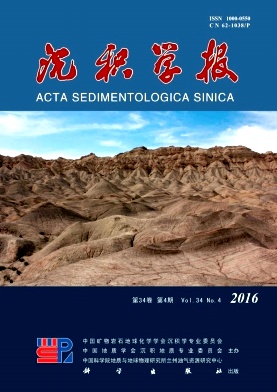Trace Fossils and Their Paleoenvironmental Significance of the Early Triassic Anshun Formation in Huaxi Area, Guiyang
doi: 10.14027/j.cnki.cjxb.2016.04.002
- Received Date: 2015-08-28
- Rev Recd Date: 2015-12-25
- Publish Date: 2016-08-10
-
Key words:
- trace fossil /
- Anshun Formation /
- habitable zone /
- sedimentary environment /
- ecosystem biotic recovery
Abstract: The trace fossils in Guiyang area was a good proxy for ecosystem recovery after the end-Permian biotic crisis. A total of 8 ichnogenera and 9 ichnospecies were identified in the Anshun Formation(including four members,A1,A2,A3,A4), their vertical distribution and evolution indicate that:trace fossils were dominated by small, simple, horizontal burrows of Planolites montanus, Palaeophycus curvatus and Phycodes palmatus in A1; Trace fossils become more abundant and diverse, and bioturbation index increased in A2 and A3. In addition to the 3 ichnospecies ichnogenera noted in A1, 6 other ichnospecies were abundant in these two members:Beaconichnus darwinum, Chondrites recurvus, Thalassinoides paradoxicus, Thalassinoides horizontalis, Arenicolites isp., Rhizocorallium commune. Complex fauna with Rhizocorallium and Thalassinoides in A3 represented a significant improvement in the marine environment in the late Early Triassic. No trace fossils were found in A4. The sedimentary environment from A1 to A3 occur in platform margin shoal to platform slope to tidal to supratidal zone, respectively. During A1 to A3, the oxygen conditions of marine environment had ameliorated. This condition could provide an optimal zone for benthic colonization. The characteristics of the trace fossils from upper A1 to A3 indicated that the study area came into the habitable zone environment. A4 was deposited in the semi restricted platform, and in the region above the habitable zone that the biological activity is relatively weak. The study of trace fossils suggested marine benthic recovery system was relatively active in the carbonate platform margin.
| Citation: | YU GuanMei, SHI Guo. Trace Fossils and Their Paleoenvironmental Significance of the Early Triassic Anshun Formation in Huaxi Area, Guiyang[J]. Acta Sedimentologica Sinica, 2016, 34(4): 626-633. doi: 10.14027/j.cnki.cjxb.2016.04.002 |






 DownLoad:
DownLoad: